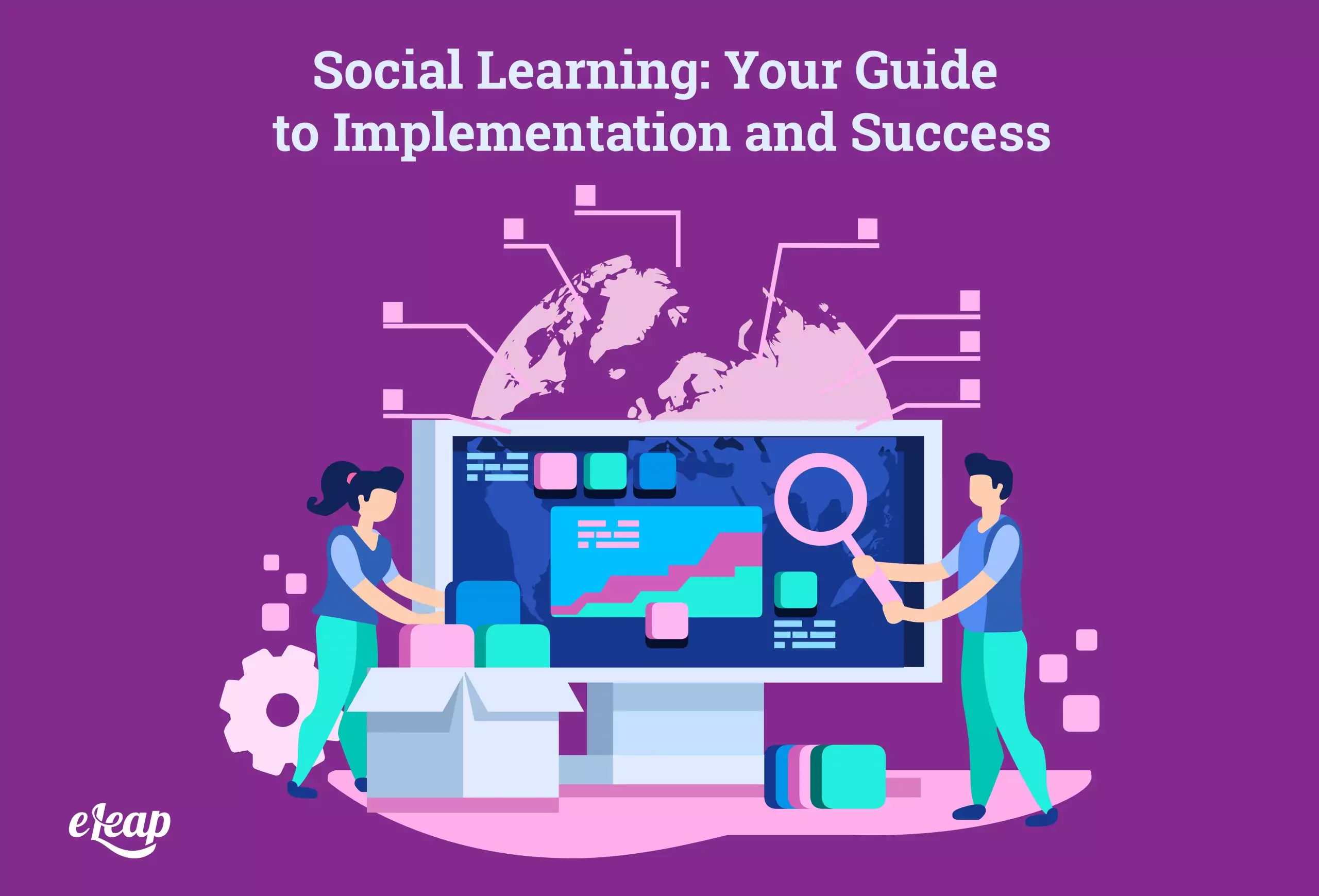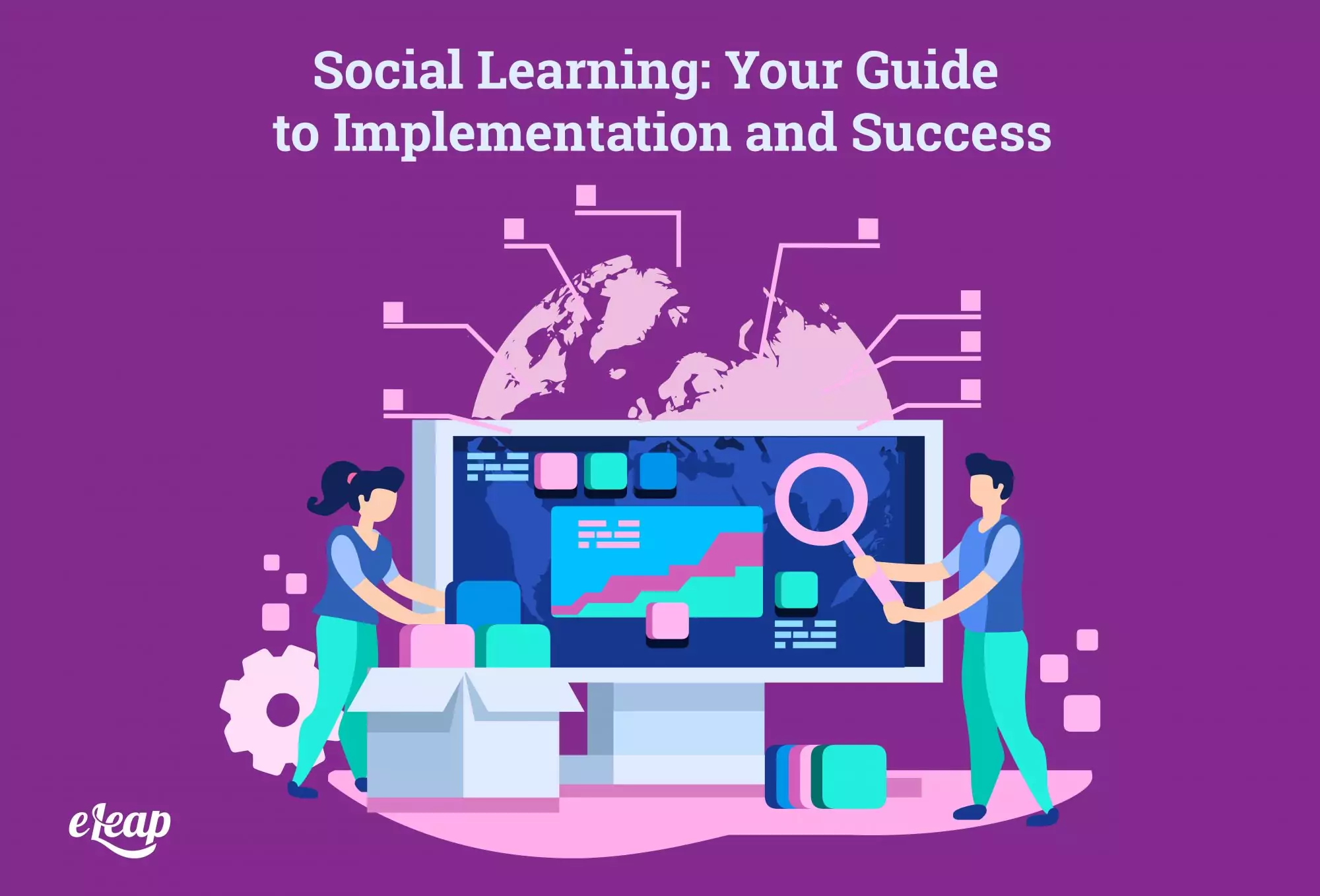Social Learning: Your Guide to Implementation and Success

Humans are social creatures. We only thrive when we’re in groups. That applies to more than you might think, too. When it comes to learning and development in organizations, it is important to remember this as we craft our social learning strategy.
Learning is a great example of this. How do toddlers learn? Through social interaction with their parents, siblings, and others. The same thing applies to most of your adult interactions – think back to the last time you had a conversation with a group of people and came away thinking, “Wow, I just learned something new!”.
Social learning also has its place within your organization. It should be a major part of your L&D initiatives. Many decision-makers understand that, but they aren’t entirely sure about how to make it happen. This post will explore implementing social learning within your overall L&D efforts successfully.

Understand How Social Learning Happens
The first step here is pretty basic. You need to understand how social learning occurs in the first place. Doing so helps ensure that you’re able to create the right conditions for your learners and ensure an authentic experience. So, how does it happen? There are five ways:
- Social context
- Observing others actions and the consequences of those actions
- Modeling within a social context
- Reinforcement
- Reciprocal determination
When you can get learners together in groups, whether physically or virtually, all of these factors come into play.
Create a Social Learning Strategy
The next step is to create a social learning strategy and make sure it’s embedded within your wider L&D efforts. How do you create such a strategy?
- Assess: First, you’ll need to assess your workforce. Where would social learning work well? Where might not be so successful? Who might be a good fit for social learning leadership?
- Goals: Determine what it is you’re trying to achieve with social learning. For instance, do you want learners to benefit from collaborating in a group? Do you want learners to interact with one another in social interaction to learn real-world lessons?
- Evaluate: Take a long, hard look at your existing L&D collateral. What parts can be transformed into social learning? Which parts are better left as they are?
- Choose: Which social learning platforms, tools, and/or methods will you use? This might be something as simple as creating a user forum where your employees can interact together and learn virtually. It may be as complex as creating a business-branded social network, complete with all the tools you might find on Facebook.
Best Practices to Understand
Once you have your social learning strategy in hand, you need to make sure that the company follows some best practices. These will help keep your efforts correctly focused, optimize learning, and stimulate employees to reach new heights.
- Mentorships: Mentorships, whether physical or digital, are critical. They play directly into the need for people to learn from those who’ve “been there, done that”. Mentorships can allow your most experienced people to share their hard-won knowledge with others, build their knowledgebase, and improve their skills. Mentoring also helps build stronger bonds between the mentor and the mentee.
- Learner-Delivered Presentations: Delivered in person or over technology like Zoom, learner presentations allow your team members to highlight key lessons learned from projects and initiatives. It’s similar to mentorship, but in a shorter, more focused form factor. However, remember that presentations generally have a one-way information flow, which can limit their utility.
- Q&A Sessions: Whether following a presentation or as part of the wider discussion around a topic, question and answer sessions allow employees to ask questions and build their knowledge. It also allows your experts to showcase what they know and benefit other team members.
- Lunch and Learn Sessions: Whether conducted in person or virtually, so-called lunch and learn sessions are like miniature seminars that take place during a regular break in the workday. It can be a lunch break, but it can also take place at other times of the day, enabling workers to combine learning and social interaction in a less formal situation than, say, a physical or virtual classroom.
- Find Buzz Builders: Most organizations find that there’s some pushback against social learning. Change is rarely easy. You can get around some of this by identifying people within the organization who can act as buzz builders. Essentially, these are employees who see and understand the importance and value of social learning. They can then act as evangelists, converting others through enthusiastic discussion.
- Let Employees Curate and Share: Social learning works best when it’s, well, social. While interacting as a group is certainly one way to do that, you can also tap into those benefits by allowing employees to curate valuable resources and information, and then share those with others. In addition to helping make learning more democratic, it also empowers your team members, allows leaders to naturally arise, and strengthens the bonds between employees.
- Integrate Social Networks: While most of your social learning will take place within the business and the LMS, don’t neglect the value that you can find with real-world social networking sites. Think Facebook and LinkedIn, for instance. A business or team-focused Facebook group could be a great way to spread a wider net when it comes to social learning, and there are tons of other examples.
Making Social Learning More Accessible
Again, human beings are social creatures. We’re hardwired to learn best in social situations – from one another. We thrive best in situations where we can both learn and teach, and everyone has these capabilities.
Making social learning part of your L&D strategy is a great idea. However, it can be pretty challenging. In addition to implementing the tips we’ve covered above, it’s also important to take a slow, measured approach. Too much change too fast can have a detrimental effect.
Instead, identify a few areas where social learning initiatives will have the greatest impact, and begin implementing there. Give it time. Measure results and acceptance, and then slowly roll out to other areas. Eventually, social learning will become part of your organization’s culture, firmly embedded and irrevocable. You can start with content from our library.